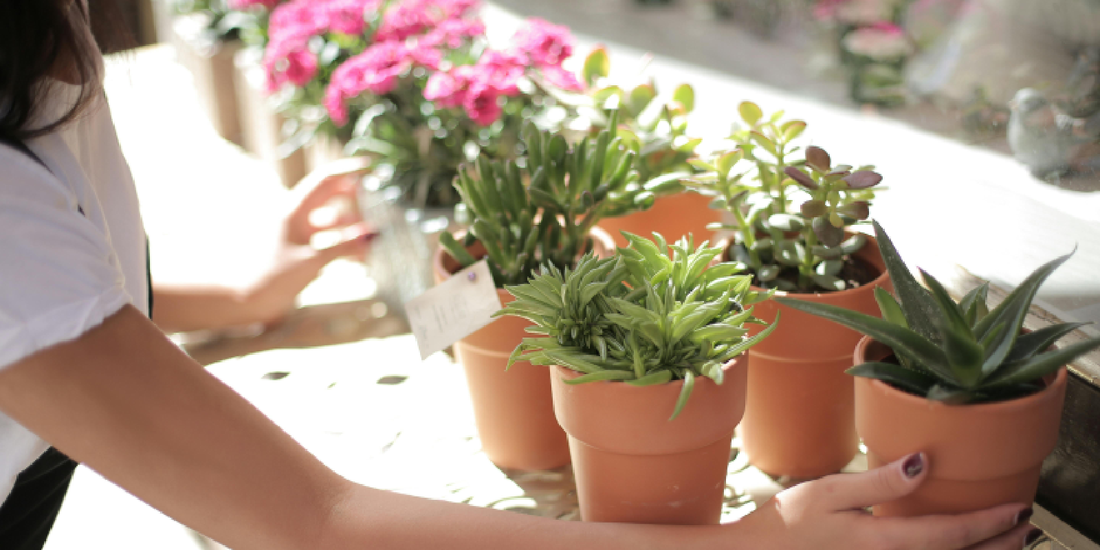
Low Maintenance Plants for Apartment Living
Share
Introduction: Why Apartment Dwellers Love Low-Maintenance Plants
Living in an apartment offers convenience and efficiency, but it also presents unique challenges for plant lovers. Many apartments have limited natural light, small floor areas, and fluctuating indoor climates due to air conditioning or heating systems. For busy professionals, students, or anyone new to plant care, the idea of maintaining a lush indoor jungle can feel intimidating. This is where low-maintenance plants come in.
Unlike high-demand plants that require strict care routines, low-maintenance varieties adapt easily to changing conditions, survive occasional neglect, and thrive with minimal input. Even if you forget to water them for a week, they’ll likely bounce back. Even if your apartment only gets a few hours of indirect light, these plants will still remain green and lively.
Paired with smart tools such as the amoyls VerdantGlow S-Shaped 8-Tier Plant Shelf with Grow Lights, apartment dwellers can maximize greenery without worrying about space constraints or lack of sunlight. This combination of resilient plants and clever furniture allows you to enjoy all the benefits of nature—calmness, better air quality, and aesthetic beauty—without the stress of advanced gardening.
Benefits of Bringing Low-Maintenance Plants into Your Apartment
1. Stress-Free Greenery
Low-maintenance plants eliminate the fear of killing your greenery. Even if your lifestyle involves travel, long work hours, or simply forgetfulness, these plants will survive.
2. Improved Air Quality
Plants like snake plants, spider plants, and peace lilies naturally filter indoor air, reducing toxins like benzene, xylene, and formaldehyde. For apartment dwellers in urban settings, this can make a noticeable difference in indoor comfort.
3. Compact and Versatile
Low-maintenance plants often come in small to medium sizes, which makes them perfect for shelves, windowsills, or vertical plant stands. Instead of cluttering your living room, they integrate seamlessly with your décor.
4. Affordable and Accessible
Many low-maintenance plants are inexpensive and widely available in garden centers or even supermarkets. Since they’re easy to propagate, you can expand your collection without spending much.
5. Enhanced Well-Being
Numerous studies show that indoor greenery reduces stress, boosts mood, and increases productivity. Apartment dwellers can especially benefit since plants provide a natural break from digital-heavy lifestyles.
Top 10 Low-Maintenance Plants for Apartments
1. Snake Plant (Sansevieria)
- Why it works: Extremely tolerant of low light, irregular watering, and indoor conditions.
- Care needs: Water once every 2–3 weeks. Allow soil to dry completely between waterings.
- Apartment tip: Place one in your bedroom. Snake plants release oxygen at night, improving air quality while you sleep.
2. Pothos (Devil’s Ivy)
- Why it works: One of the most forgiving plants, thriving in low to bright indirect light.
- Care needs: Water only when soil is dry. Can survive occasional forgetfulness.
- Apartment tip: Hang it on a top shelf of your VerdantGlow stand so its vines cascade downward, creating a dramatic look.
3. ZZ Plant (Zamioculcas zamiifolia)
- Why it works: Practically indestructible, tolerates neglect, drought, and low light.
- Care needs: Water once every 2–3 weeks. Avoid overwatering.
- Apartment tip: Perfect for darker corners of the living room or hallway.
4. Spider Plant (Chlorophytum comosum)
- Why it works: Adapts easily, produces baby plantlets that you can propagate.
- Care needs: Weekly watering and indirect light.
- Apartment tip: Safe for pets, making it ideal for households with cats or dogs.
5. Peace Lily (Spathiphyllum)
- Why it works: Adds elegance with glossy leaves and white blooms, tolerates lower light.
- Care needs: Water when leaves droop slightly.
- Apartment tip: Excellent for humid bathrooms with moderate light.
6. Succulents
- Why it works: Thrive on minimal water and lots of light.
- Care needs: Bright light and watering once a month.
- Apartment tip: Group succulents on one tier of the VerdantGlow shelf to create a modern mini-desert garden.
7. Cacti
- Why it works: Perfect for sunny windows, nearly maintenance-free.
- Care needs: Water sparingly, once every 3–4 weeks.
- Apartment tip: Mix tall cacti with smaller succulents for visual contrast.
8. Chinese Evergreen (Aglaonema)
- Why it works: Extremely tolerant of shade and irregular watering.
- Care needs: Water once every 10–14 days.
- Apartment tip: Ideal for office desks or study nooks.
9. Rubber Plant (Ficus elastica)
- Why it works: Attractive broad leaves, easy to grow, and resilient.
- Care needs: Bright indirect light, watering every 1–2 weeks.
- Apartment tip: Adds a bold accent piece in living rooms.
10. Aloe Vera
- Why it works: Hardy succulent with the bonus of medicinal gel in its leaves.
- Care needs: Minimal watering, bright light.
- Apartment tip: Keep one in the kitchen for easy access to its healing properties.
How to Arrange Plants for Maximum Impact in Apartments
-
Go Vertical
Space is often limited, so use vertical plant shelves like the amoyls VerdantGlow S-Shaped 8-Tier Plant Shelf with Grow Lights. Its multi-level structure makes it possible to showcase trailing, upright, and compact plants together without clutter. -
Mix Textures and Heights
Pair tall snake plants with cascading pothos or compact succulents. The contrast in height and leaf texture creates visual balance. -
Highlight Corners
Place larger plants in unused corners to brighten dark spaces. Smaller plants can fill shelves and windowsills. -
Incorporate Grow Lights
Many apartments lack sufficient natural light. The VerdantGlow shelf’s integrated grow lights ensure your plants receive the right spectrum for healthy growth year-round. -
Match Décor Style
Whether your apartment leans minimalist, Scandinavian, or boho chic, the sleek black metal and S-shaped design of the VerdantGlow shelf blends seamlessly.
Plant Care Tips for Busy Apartment Residents
- Create a Watering Reminder: Use phone alarms or apps to keep track.
- Dust Regularly: Wipe leaves with a damp cloth every few weeks to keep photosynthesis efficient.
- Avoid Overwatering: This is the number one killer of indoor plants. Always check soil dryness before watering.
- Group Plants by Needs: Place similar plants together for easier care routines.
- Use Self-Watering Planters: Particularly helpful if you travel often.
- Rotate Monthly: Helps plants grow evenly by exposing all sides to light.
Why the VerdantGlow Shelf is the Perfect Partner for Low-Maintenance Plants
- Eight Tiers of Storage: Accommodates a wide variety of plants, from tall to trailing.
- Integrated Grow Lights: Mimics natural sunlight, supporting growth even in darker apartments.
- Space-Saving Design: Slim footprint fits into corners or against walls without overwhelming small spaces.
- Modern Style: The S-shape creates a sculptural effect, making your plant collection double as art.
- Durability: Built from high-quality materials, ensuring stability and long-term use.
With this shelf, you don’t just buy furniture—you invest in a complete indoor gardening system.
Conclusion
Apartment living no longer means sacrificing greenery. With the right selection of low-maintenance plants—snake plants, pothos, ZZ plants, and more—you can enjoy a thriving indoor oasis that requires minimal effort. Pair them with the amoyls VerdantGlow S-Shaped 8-Tier Plant Shelf with Grow Lights, and you’ll have a stylish, functional solution that keeps your plants healthy and your space beautiful.
Start small, choose resilient plants, and let them bring freshness into your home without adding stress to your daily routine.
Call to Action:
Ready to create your own apartment-friendly indoor garden? Explore the VerdantGlow Collection from amoyls and discover how effortless greenery can be.
